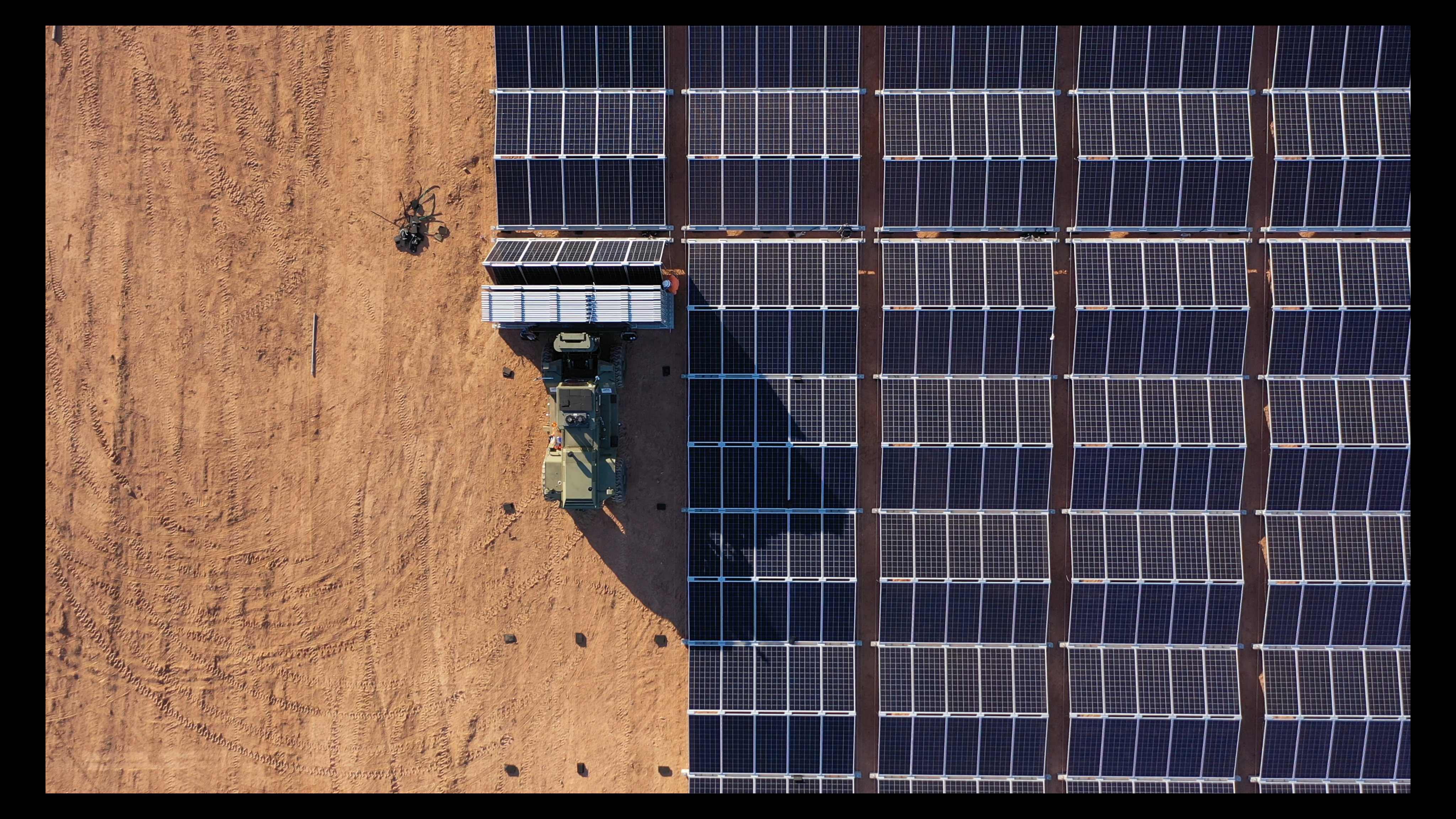Plans to build a giant solar power and battery facility in central Australia to supply electricity to Singapore will go ahead thanks to backing from tech and mining billionaires Mike Cannon-Brookes and Andrew ‘Twiggy’ Forrest.
The duo are co-leads on an investment round for Singapore-based Sun Cable‘s $22 billion proposal for a 10-gigawatt (GW) solar farm and 22GWh battery storage near Tennant Creek, in the Northern Territory.
Singapore gets 95% of its electricity from imported LNG and Sun Cable hopes running a 4500km high voltage direct current cable from the 15,000 hectare site – around a quarter of the size of Singapore itself – via Darwin to the island state will supply up to one-fifth of the city’s power needs. It will be the world’s largest solar farm and also supply the NT capital.
The 10GW plant is nearly double the 5,500 megawatts Snowy Hydro scheme, which generates around 4500GWh anually. The Australia-Singapore Power Link (APSL) plant’s generation capacity is four times more than Australia’s largest coal-fired power station.
Central to the project is Sydney solar energy startup 5B, founded by Chris McGrath and Eden Tehan in 2013.
The business developed new technology for portable, prefabricated solar arrays, re-engineering the supply chain and simplifieying how solar projects are delivered, using fewer materials, rapid deployment and streamlined logistics. The company has a production facility in Alexandria and has already rolled out projects using its “Maverick” system in remote locations across Australia.
Cannon-Brookes is backing the Sun Cable project through his private family investment firm, Grok Ventures, and Forrest through Squadron Energy, while the size of there investment was undisclosed, it’s believed to be under $50 million.
Cannon-Brookes first revealed his support in September when he was in New York visiting the UN for climate change talks. The billionaire described the project as “completely batshit insane” at the time, adding that the engineering checked out.
Supporting this week’s announcement he called it “a massively exciting project with world-changing potential”.
“We have the resources, the ingenuity and the drive to get it done – we just have to put it all together,” he said.
“If we nail this, we can build a new export industry for Australia, create jobs and set our economy up for the future.”
Forrest, Squadron’s chairman, was equally sanguine.
“Australia has the potential to be at the centre of our region’s transition to clean energy, a serious priority for our country. This presents the Australian economy with enormous opportunities not just for reducing emissions but also for the economic march of our nation and global competitiveness,” he said.
“Sun Cable’s Australia-Singapore Power Link project has the potential to be an important part of this nation building journey.”
Sun Cable CEO David Griffin, a 20-year veteran of developing utility-scale solar and wind farms in Australia and former development GM at Infigen Energy, said the business was thrilled to have the financial support of “two important leaders in the international business community”.
The over-subscribed capital raise will allow Sun Cable to undertake the development work for the ASPL and reach financial close on it by late 2023. The project is expected to take six to seven years to complete.
Big Battery gets bigger too
News of Sun Cable’s progress comes in the same week that South Australia’s Hornsdale Power Reserve, dubbed the Tesla Big Battery, announced plans to expand the world’s largest battery by 50% by mid 2020.
The 50 MW/64.5 MWh expansion, supported by Tesla, will be the first grid-scale battery in Australia to provide inertia benefits to the National Electricity Market (NEM), which is critical to grid stability and the future integration of renewable energy.
Operator Neoen, said battery has saved consumers more than AU$50 million in power costs in its first year of operation. The South Australian government has committed $15 million over five years in grant funding towards the expansion and the Australian Government’s Australian Renewable Energy Agency has also committed $8 million in grant funding to the project.
It’s also the first battery project in Australia to receive debt financing support from the Clean Energy Finance Corporation (CEFC).
CEFC CEO Ian Learmonth said his organisation sees grid-scale batteries as a critical part of the next wave of investment to support the rapid chances in the national electricity system.
“By delivering the first project financing of a stand-alone NEM-connected battery in the Australian market, our goal is to demonstrate the market potential of grid technologies for other investors and developers,” he said.




















Trending
Daily startup news and insights, delivered to your inbox.